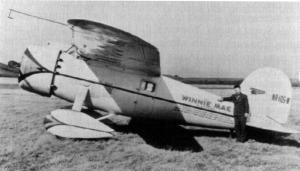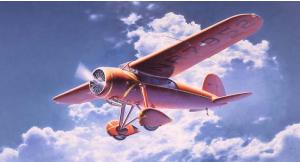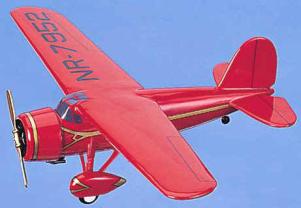
| Year in Service: 1928 | Maneuver: -1 | Armor: 3/6/9 |
| Threat Value: - | Fire control: -2 | Movement: Fly 37/45 |
| Size: 3 | Sensors: None | Deployment Range: 1200 km |
| Crew: 1 | Communications: None |
Perks&Flaws
Cargo: max 500 Kg.Payload.
Passenger Seating (6)
Fragile Chassis.
Other Data

|

|

|

|
- Average Cost: 18500$
- Frequency: Uncommon
- Length: 8.4 m.
- Height: 3.5 m.
- Wingspan: 12.5 m.
- Height 2.5 m.
- Net Weight: 750 kg.
- Cruise Speed: 220 km/h
- Max. speed: 270 km/h
- Land speed: 85 km/h
- Service ceiling: 6500 m.
The Vega was a six-passenger monoplane built by the Lockheed company starting in 1927. It became famous for its use by a number of record breaking pilots who were attracted to the rugged and very long-ranged design. Amelia Earhart became the first woman to fly the Atlantic single handed in one, and Wiley Post flew his around the world twice.
Both the internal structure and the outer covering of the aircraft were wood. The wing was of the internally braced, cantilever type, and the fuselage was of semi-monocoque construction. A new feature was a circular cowling surrounding the 450-horsepower Pratt & Whitney Wasp air-cooled engine. This cowling provided substantial increases in the speed of aircraft employing radial engines, but, at the same time, directed the cooling air through the engine in such a way as to provide adequate cooling.
Fairings, called pants, around the wheels of the landing gear also reduced the drag and resulted in an increase in the speed of the aircraft.
The Vega was a highly advanced and refined design for its day, and, even now, the performance is very good for an aircraft with fixed landing gear.
The Lockheed Vega was originally (1927) designed to carry 4 passengers plus a pilot. The model represented here is a later version, modified to add two more seats. As usual, many different sub-versions existed, including a sea-plane one (no hard data on this one, but speed would probably be a little lower).